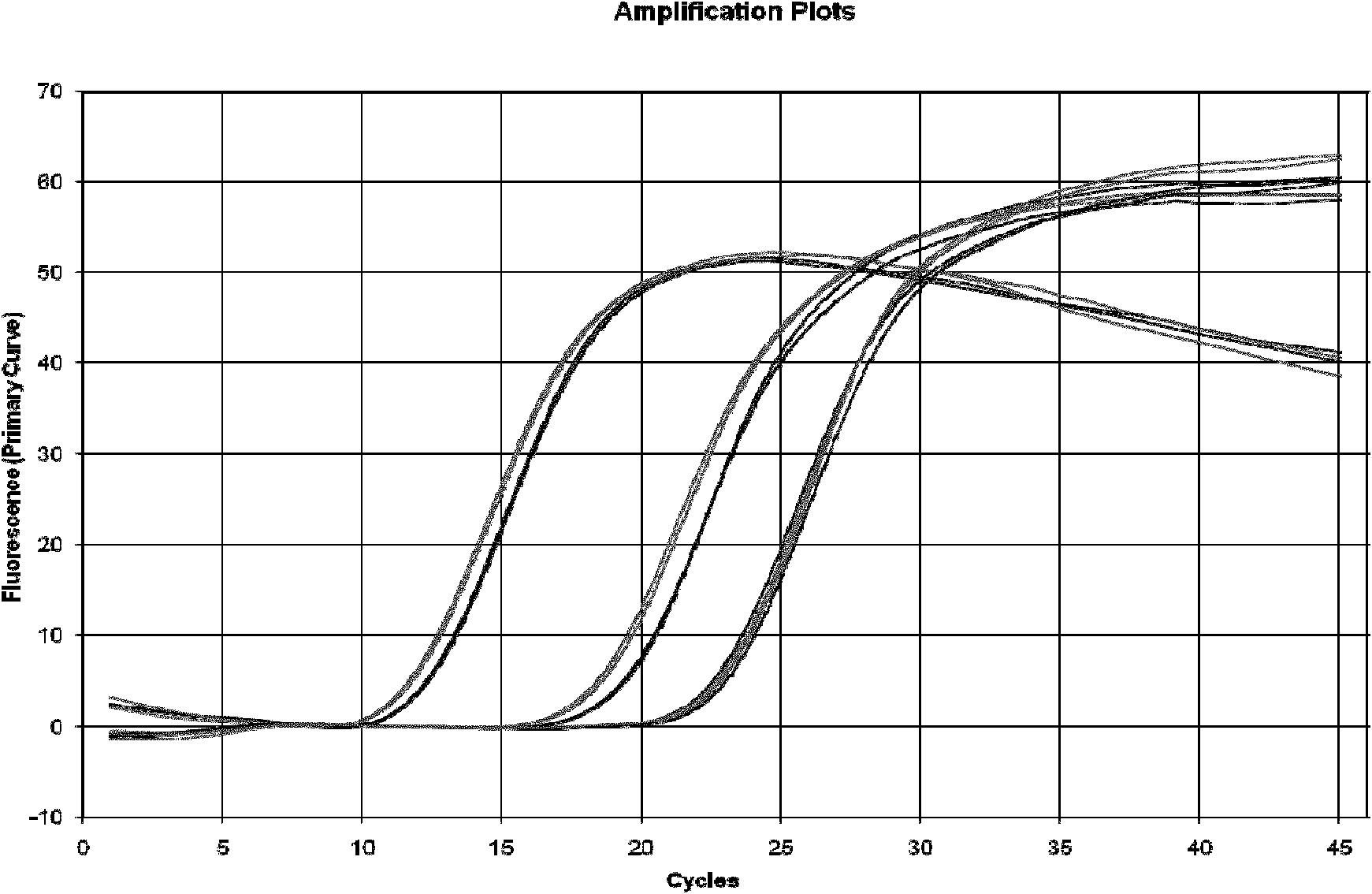Application of E3 ubiquitin ligase CHIP in gliomatosis cerebri disease
A ubiquitin ligase, glioma technology, applied in the application field of E3 ubiquitin ligase CHIP in glioma disease, can solve problems such as proliferation and invasion
- Summary
- Abstract
- Description
- Claims
- Application Information
AI Technical Summary
Problems solved by technology
Method used
Image
Examples
Embodiment 1
[0042] Expression of CHIP in glioma tissues and cell lines and its relationship with pathological grade
[0043] In this example, real-time quantitative RT-PCR, immunohistochemistry, immunofluorescence and other methods were used to study the expression of CHIP in glioma tissue cell lines and its relationship with pathological grades.
[0044] Materials and Methods
[0045] 1. Experimental materials
[0046] (1) Tissue specimens
[0047] Selected 20 cases of brain glioma tissue from Shanghai Changzheng Hospital from 2002 to 2009, which were surgically resected, confirmed by pathology, and embedded in paraffin, including 10 cases of low-grade glioma (5 cases of pilocytic astrocytoma, diffuse astrocytoma 5 cases of tumor), 10 cases of high-grade glioma (5 cases of anaplastic astrocytoma, 5 cases of glioblastoma). Five cases of paraffin-embedded normal brain tissue. All pathological diagnoses and grading were determined independently by two pathologists.
[0048] Both U251 ...
Embodiment 2
[0233] Construction and identification of RNA interference and overexpression lentiviral vector targeting CHIP
[0234]Example 1 has proved that: in normal brain tissue, CHIP is mainly expressed in the cytoplasm of neurons, but not in normal glial cells; in glioma tissues, CHIP is mainly expressed in the cytoplasm of tumor cells , co-localized with the marker protein GFAP of astrocytes, and its expression increased with the increase of the level, suggesting that it may play a role in the development, proliferation and invasion of glioma. However, this finding is in contrast to the expression of CHIP in other tumors. In order to further study the biological function of CHIP at the cellular and animal levels, this example intends to construct a lentiviral RNA interference and overexpression vector targeting CHIP to further study the biological function of CHIP.
[0235] Materials and Methods
[0236] 1. Experimental reagents
[0237] PCR reagent primer(R&F)
[0238...
Embodiment 3
PUM
 Login to View More
Login to View More Abstract
Description
Claims
Application Information
 Login to View More
Login to View More - R&D
- Intellectual Property
- Life Sciences
- Materials
- Tech Scout
- Unparalleled Data Quality
- Higher Quality Content
- 60% Fewer Hallucinations
Browse by: Latest US Patents, China's latest patents, Technical Efficacy Thesaurus, Application Domain, Technology Topic, Popular Technical Reports.
© 2025 PatSnap. All rights reserved.Legal|Privacy policy|Modern Slavery Act Transparency Statement|Sitemap|About US| Contact US: help@patsnap.com



